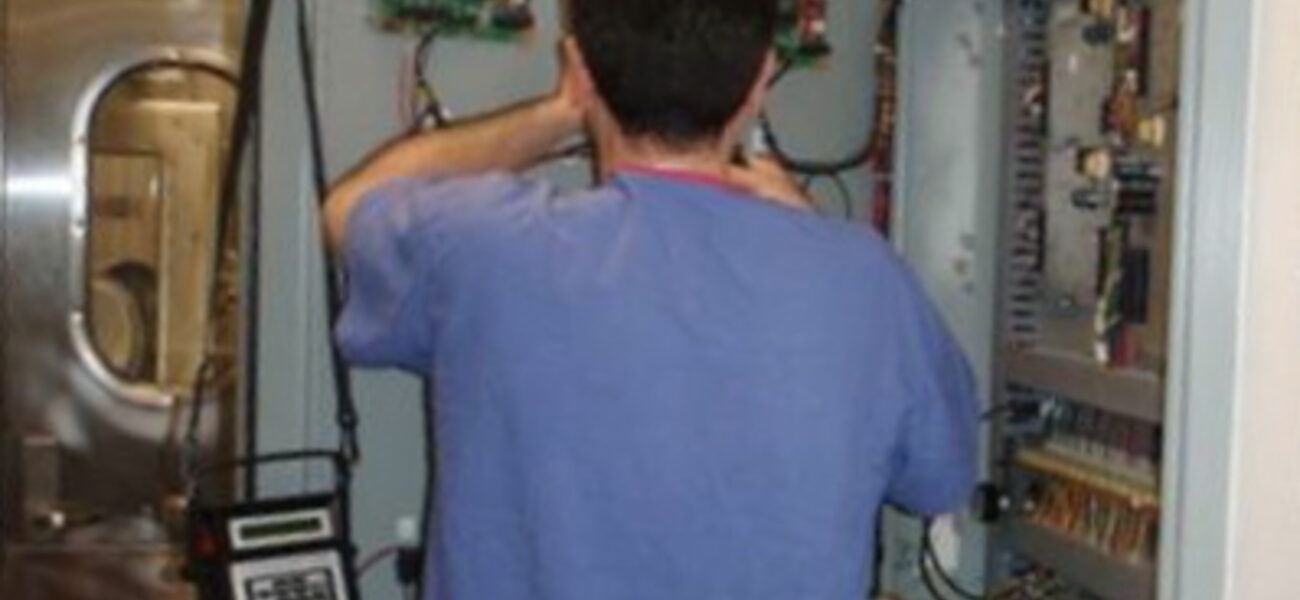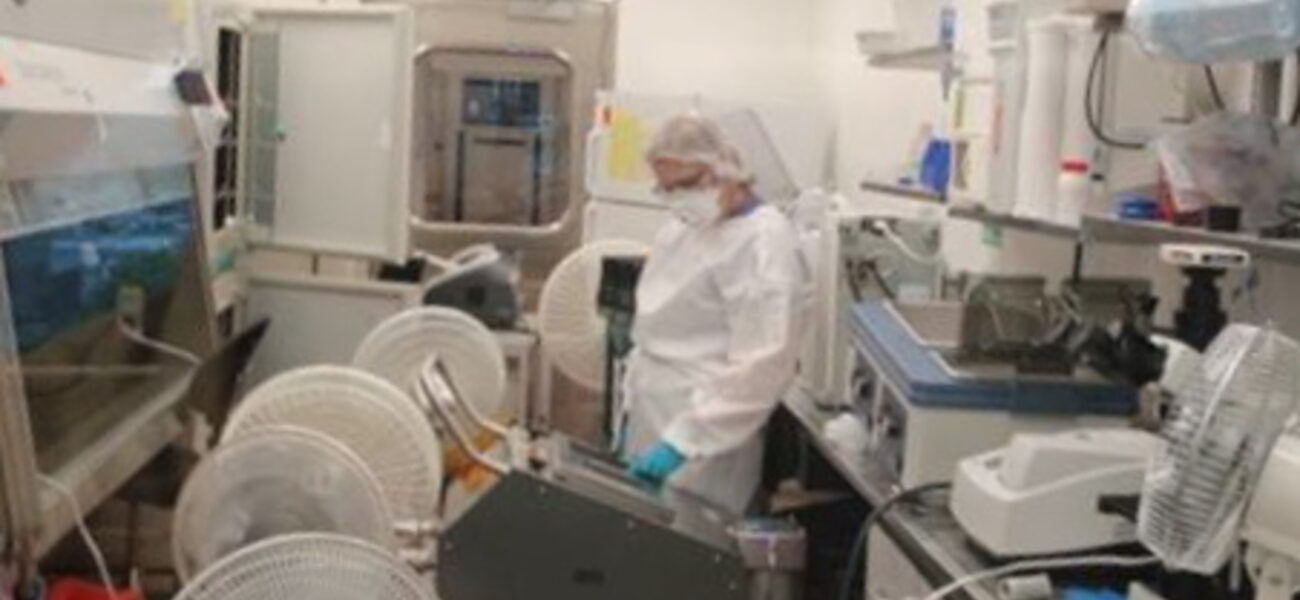Annual revalidation of BSL-3 biocontainment facilities—which involves verifying that systems are operating to specifications—is important not only to maintain a safe working environment for scientific needs, but also to reduce utility and maintenance costs and protect the substantial financial investments such buildings represent. The time and expense of the revalidation process can be minimized with careful preplanning.
“Annual revalidation provides an opportunity for the researchers, staff, and outside vendors to enter a clean facility and verify that the research equipment is still functioning properly,” explains Dan Fisher, associate vice chancellor of research operations for the University of Pittsburgh Facilities Management. “It also provides a time to review and update your standard operating procedures, which can be ever-changing documents.”
What Does It Mean?
Revalidation can be known by other terms, including recommissioning, re-verification, and retro-commissioning.
“I tend to look at them as the same process—a process of verifying that systems work independently, and also work in conjunction with each other,” says Fisher.
A former Navy engineer, Fisher has long been familiar with recommissioning, a routine procedure on ships. When he started working in facilities management about 25 years ago, he realized the same procedure could be useful for research laboratories.
“The environmental controls were drifting and coming out of calibration—at that time more frequently than now, where improvements in technology have drastically increased the life expectancy of environmental controls—so we started a program of recalibrating annually,” he explains.
“As controls come out of calibration, utility use and cost increase. So at that time, the interest came more from an energy control and comfort standpoint. Then we started seeing issues with more complicated laboratories, such as air pressure, and difficulties based on system and control performance. The revalidation process has grown and blossomed from there.”
Over the years, Fisher and his team have established best practices for revalidation that can be applied at any biocontainment facility.
Why Is It Needed?
From a facilities management and scientific standpoint, re-verification provides numerous benefits:
- Time for staff, support personnel, and vendors to perform testing, required routine repair, and preventive maintenance.
- Verification of engineering controls.
- Verification of room integrity.
- Testing and verification of ventilation systems.
- Annual inspection of scientific/clinical equipment.
- A chance to review, update, and test standard operating procedures.
- An opportunity to retrain all staff.
The Process of Revalidation
Generally, BSL-3 facilities have two options for revalidation: Shut the entire facility down and relocate research, or conduct what is referred to as an “active shutdown.”
“In an active shutdown, you are not necessarily moving research out of the facility or doing a complete gaseous decontamination, but rather doing a surface decontamination with the staff continuing to use required personal protective equipment (PPE),” explains Fisher. “At the University of Pittsburgh, we perform revalidations on a case-by-case basis, relying on a risk assessment performed by our biosafety officer, researchers, and facilities staff.
“We look at the tasks that may need to be performed within that space and then determine if, by having someone working in the lab, we are increasing the risk of exposure. If we do an assessment and determine there is a high probability of this occurring, we would look at shutting down the lab and securing the agents.”
A full shutdown requires relocation of pathogens (i.e. select agents), a halt to all scientific operations, and decontamination and clearing of each suite, before re-verification can be completed and operations returned to normal. PPE would not be required for access. This is in contrast to an active laboratory shutdown, where pathogen relocation is not required, but no active work can take place during re-verification, and PPE is required.
Relocation requires swing space to which personnel can move research, supplies, equipment, and select agents. Suites must be cleared and surfaces disinfected; if the risk assessment warrants it, all labs are disinfected with vaporized hydrogen peroxide, says Fisher. The lab manager, biosafety officer, laboratory technicians, veterinary technicians, operations manager, and facilities staff are required to complete these tasks, which typically take around 16 hours.
Re-verification tasks fall into six categories:
- Engineering controls
- Suite/facility
- Exhaust HEPAs
- Room integrity testing
- Equipment certification
- Completion
Engineering controls include, but are not limited to: temperature sensors, humidity sensors, differential pressure sensors, isolation dampers, various airflow sensors and verification of actual airflows, and biosafety cabinets. Facilities personnel and possibly outside vendors are involved in this review, with re-verification taking about 24 labor hours.
“The devices that are monitoring the pressure gradient and determining if the directional airflow is being maintained are extremely important. This review also provides us with an opportunity to verify safety devices,” notes Fisher. “Typically we send a minimum of two individuals into containment for these tests, so this takes approximately a day-and-a-half in the facility.”
Under the suite/facility category, tasks include re-lamping of fixtures, door closure adjustments, room-level filter changes in animal suites, safety shower testing, general repairs to the facility, and lab equipment maintenance. Facility engineers and lab technicians complete the tasks in about 24 labor hours.
Exhaust HEPA filters and the banks that hold them must be decontaminated before they are pulled out, says Fisher. This requires both the biosafety officer and facilities engineers, and takes approximately 24 hours for one lab.
Room integrity testing determines how tight the room envelope is, utilizing the commissioning (if it’s a new facility) or previous year’s data as baseline for comparison. This task typically requires 24 hours of labor.
“The standards and specifications for our BSL-3 projects are specific: We want to identify all known sources of air entering or leaving the room. This information is critical for validation of the gaseous decontamination process. We attempt to construct a tight facility while identifying all potential leak sources. We typically isolate the ventilation systems and seal all known sources of air entry such as the undercut of the door. We then draw the room down to a negative two inches, and measure the volume of makeup air required to maintain 2 inches of negative,” explains Fisher.
“As a further test, we reduce the operating differential pressure to maintain a negative .05 inches, which is a typical operating differential pressure. We do this to validate and verify that the system is functioning as it was designed under normal operating conditions.”
Equipment certifications include, but are not limited to: biosafety cabinets, supply-side HEPA filters (an animal facility doing agricultural work may have this), animal caging certifications, and transfer carts. Escorts are required if outside personnel are utilized. These tasks take engineers, laboratory techs, and vendors another eight hours to complete.
“Completion is the time period when the facilities engineers are finished with the revalidation. Additional staff then restock the laboratory, PPE, and exposure kits; verify the powered air purified respirators; update signage; and return the suite to the principal investigators.” Completion takes another 16 hours of labor.
In addition to the laboratory re-verifications process, the University conducts annual testing of all ventilation systems, including the building management and electrical power systems. Failure tests and power interruptions are performed under controlled conditions to verify the functionality and the redundancy of these systems.
Adding 10 hours to the re-verification timeline to schedule and communicate the process, the total of 74 labor hours costs an estimated $4,162, based on $56.25 per hour—the average wages and benefits of all personnel involved.
“It is a time-consuming activity that can interrupt research. However, re-verification provides a high level of confidence that the facility is functioning as it was designed, to provide a safe working environment to conduct research,” says Fisher.
Documentation and Conclusions
A critical piece of the re-verification process is documentation.
“Every test that you perform in that facility needs to be documented. You will rely on this documentation year after year. The commissioning report provides your baseline and a comparison to when the facility was new. The documentation prepared during your annual re-verifications is going to be used year after year and continuously compared to your baseline commissioning report,” notes Fisher.
Equally important is the planning/scheduling process. Fisher says they begin planning shutdowns six months in advance whenever possible. This makes it easier to schedule around research and minimize disruptions.
“We allow flexibility based on ongoing research. We would never tell a researcher ‘you need to shut down now.’ A lot of planning goes into effect when we start the process. At times, the scheduling process is more involved than the revalidation process.”
Planning meetings typically involve Fisher, the director of the facility, the biosafety officer, and the lab animal manager, with the director taking the lead.
“It’s definitely a team event. I think that’s critical.”
And while the time and cost figures may make facilities managers balk, Fisher advises thinking about the long-term savings of having a facility that runs efficiently and provides a safe environment for everyone.
“A planned annual re-verification absolutely significantly reduces the possibility of failures. It’s like changing the oil in your car every six months as opposed to every five years—you are decreasing the probability of damage.”
“Though no researcher enjoys the process, they have come to realize there’s a benefit, and it provides them an opportunity to verify their own equipment.”
By Taitia Shelow
This report is based on a presentation Fisher made at Tradeline’s 2013 International Conference on Biocontainment Facilities. Dr. Kelly Cole, associate director of the University of Pittsburgh Regional Biocontainment Laboratory, and Lesley Homer, biosafety officer for the Regional Biocontainment Laboratory, contributed to this report.
Dr. Kelly Cole and Dan Fisher are chapter contributors and co-editors of the new 2013 book Management Principles for Building and Operating Biocontainment Facilities. Lesley Homer co-wrote the introduction. This book is available in eBook and paperback at Amazon.



